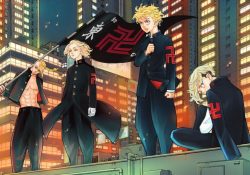The five characters 「シ」, 「ン」, 「ツ」, and 「ソ」 are devilishly similar. Basically, the difference is that the first two are more “horizontal” than the other two. The small lines are slanted more horizontally, and the long line is drawn in an upward curve.
The second has two small almost vertical lines and the long line does not curve as far as it is drawn from top to bottom. It's almost like a slash, while the former is more like a bow. These kana are difficult to sort and require some patience and practice.
There is another similar kana that can be confused, which is 「ノ」の / NO.
- シ - し - SHI
- ツ - つ - TSU
- ソ - そ - So
- ン - ん - n
- ノ - の -
The real confusion begins when we try to differentiate between シ and ツ, and ソ and ン. Despite discussing a little about the differences in strokes, you're probably still completely lost.
Índice de Conteúdo
The differences between シツ / ツツ and ノ
The differences are few, how will we know how to differentiate quickly when reading a text? Only time and practice can help. The more words you know in the language, the faster and easier it will be to read Katakana words without having to make such a fuss.
There are some tips that we can apply to prevent this from happening, it is interesting to note that these 5 katakana look quite similar to their 5 hiragana. (how? What the hell? Where?) The last video we left at the end of the Post will explain in detail how this is possible. You should have also noticed this in the image at the beginning of the Post.
You can also think of these 5 katakana as follows:
- シ - Shi is a girl looking at Tsu's eyes
- ツ – tsu is a boy looking down
- ソ - flashing "so "
- ン - Thinking about it "nnnnn ... I don't think so."
- ノ- Eyes closed "noooooooooooooo!"
Tips to tell Similar Katakana apart
Here are some tips to help you differentiate between some of the most similar katakana:
- シ (shi) and ツ (tsu): To remember the difference between these two characters, look at the direction of the smaller lines. In シ (shi), lines are slanted from left to right (like a backslash: ), while in ツ (tsu), lines are slanted from right to left (like a forward slash: /).
- ン (n) and ソ (SO): The difference between these two characters is in the line curvature. In ン (n), the line is curved and resembles a tiny "n", while at ソ (so), the line is straight and sloping.
- ラ (RA) and ル (RU): The character ラ (Ra) looks like a tiny "l" while the character ル (UK) resembles a tiny "j". Remember that "Ra" starts with the letter "R", as well as "Ru", so you can associate the similarity between "L" and "J" with the similarity between "R" and "R".
- ウ (u) and ワ (wa): The ウ (u) character has a horizontal line at the top, while the ワ (wa) character has a diagonal line.
- マ (ma) and ム (mu): The マ (ma) has three lines, with a diagonal line in the middle extending from left to right. On the other hand, the ム (mu) has only two lines, with a curved line at the bottom.
Videos to differentiate the Katakana
The 2 videos below show the differences between シ and ツ / ソ and ン, and give tips on how to memorize them.





